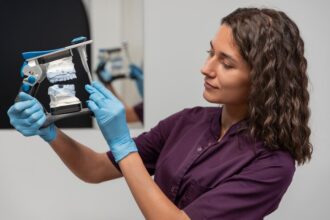Understanding Chronic Facial Pain
When the Pain Has No Name
Pain that hides behind the cheekbone, burns along the jaw, or jolts like lightning on the forehead can confuse even trained professionals. Many sufferers of trigeminal neuralgia, TMJ disorders, or burning mouth syndrome are told it’s just stress or anxiety. This can be crushing—when you know it’s real but others doubt it.
Chronic facial pain can come from nerve damage, joint issues, or even past trauma. It doesn’t always show up in X-rays. Sometimes, it whispers instead of screams, making it hard to explain. But to the one suffering, every second counts.
Mapping the Source of Facial Nerve Disorders
The facial nerve system is complex. Pain can stem from a pinched nerve, dental surgery, or even muscle tension. Facial pain centers use advanced tools like MRI scans, nerve blocks, and detailed muscle assessments to trace the exact cause. What general practitioners may miss, specialists catch.
They don’t just treat symptoms. They decode them.
How a Facial Pain Center Can Help
Beyond General Practice
A regular visit to a dentist or neurologist may not give you full answers. That’s because facial pain often crosses multiple systems—neurological, muscular, and dental. A facial pain center brings all of these together under one roof. It’s a team-based approach.
Specialists work together—neurologists, orofacial pain doctors, psychologists, and physical therapists. They don’t just offer meds; they offer hope through precision care.
A Team That Believes Your Pain Is Real
Many patients walk into these centers feeling hopeless. They’ve heard phrases like “you’re just stressed” or “maybe it’s in your head.” At a dedicated center, validation is the first treatment. These professionals listen deeply. They see the signs others overlook. They believe you.
And that can be life-changing.
Common Conditions Treated
Trigeminal Neuralgia and Nerve Disorders
Known as the “suicide disease” because of its intensity, trigeminal neuralgia causes sudden, stabbing pain. It can be triggered by a breeze, a light touch, or even smiling. Facial pain centers often have the tools to treat this condition through nerve medications, radiofrequency ablation, or surgical options when needed.
Other conditions like post-herpetic neuralgia (pain after shingles) or atypical facial pain are also handled with care and updated treatment options.
TMJ Dysfunction, Tension, and Muscle Pain
Your temporomandibular joint (TMJ) is small but mighty. When misaligned or overworked, it can cause tightness, aching, and even ear pain. Many centers use bite analysis, jaw tracking, and muscle relaxation therapy to reduce discomfort.
From grinding your teeth to clenching in your sleep, your facial muscles are working overtime. These clinics help them finally rest.
The Emotional Cost of Living With Facial Pain
The Hidden Toll on Mental Health
Pain doesn’t just hurt the body—it breaks the spirit. Chronic facial pain wears people down over time. Simple joys like eating, talking, or kissing a loved one become hard. People withdraw. Depression and anxiety often follow.
That’s why facial pain centers integrate mental health support into treatment. Therapy, stress management, and emotional care are part of the plan—not an afterthought.
Reclaiming Joy Through Pain Management
Getting control over your pain means getting your life back. With time and the right plan, people start smiling again—genuinely. They eat without flinching. They sleep without fear. The light comes back in their eyes.
It’s not just treatment—it’s transformation.
A Path Forward
Treatment Options Tailored to You
There’s no one-size-fits-all solution when it comes to facial pain. That’s why centers offer a range of care including:
- Oral appliances to reduce muscle strain
- Medications like anticonvulsants or anti-inflammatories
- Nerve blocks or injections
- Physical therapy for facial and neck muscles
- Biofeedback and cognitive therapy to manage stress triggers
Each plan is made just for you, based on your symptoms, triggers, and goals.
Support Beyond the Chair
Healing doesn’t end when the appointment does. True centers keep in touch. They offer follow-ups, exercises, and even support groups. You’re not just a patient—you’re part of a long-term journey toward comfort.
Conclusion: Where the Ache Ends, Healing Begins
Facial pain might be invisible to the world, but it doesn’t have to stay hidden. Facial pain centers provide more than relief—they provide understanding. They treat not just the face, but the feelings. Not just the nerves, but the person.
Behind every clenched jaw and every tired smile, there’s a story of endurance. And finally, there’s a place where that story gets heard.
You don’t have to suffer in silence. Help is real. And it’s waiting.
FAQs
Q1: What’s the first step in getting help at a facial pain center?
A thorough evaluation. You’ll meet specialists who assess your symptoms, history, and pain triggers using advanced diagnostics.
Q2: Is facial pain always linked to dental issues?
Not always. While dental problems can cause facial pain, nerves, muscles, and even past trauma can also be sources. That’s why a full evaluation is key.
Q3: Can these centers help with pain after surgery or injury?
Yes. Post-surgical and trauma-related facial pain are common cases. Specialists create recovery plans to ease long-term discomfort.
Q4: Is mental health support part of treatment?
Absolutely. Many centers include therapists or counselors to help with the emotional toll chronic pain can take.

















